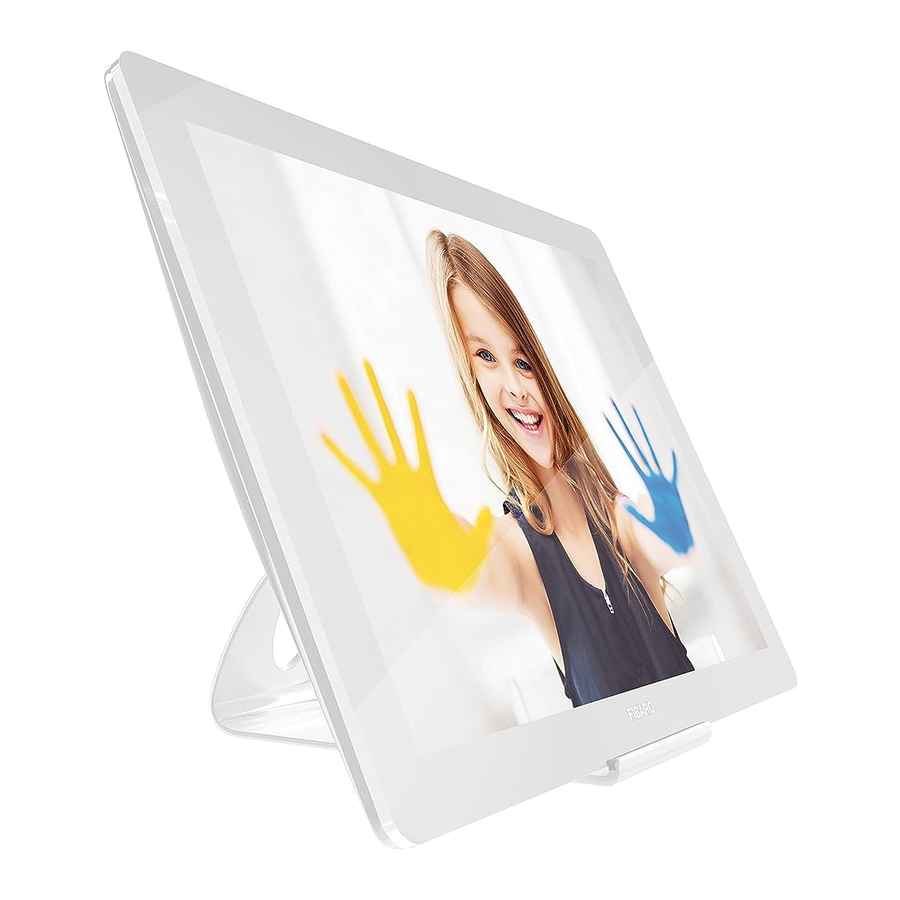- ページ 9
コントローラー FIBARO SWIPE FGGC-001のPDF 取扱説明書をオンラインで閲覧またはダウンロードできます。FIBARO SWIPE FGGC-001 13 ページ。 Swipe gesture controller

16
#11: Associations
i
NOTE
Association
ensures
direct
transfer
of
control
commands
between devices, is
performed
without
Association (linking devices) - direct control of other devices within
participation of the
the Z-Wave system network e.g. Dimmer, Relay Switch, Roller Shutter
main controller and
or scene (may be controlled only through a Z-Wave controller).
requires
associated
device to be in the di-
rect range.
The Swipe provides the association of six groups:
1st association group – "Lifeline" reports the device status and al-
i
NOTE
lows for assigning single device only (main controller by default).
By default 2nd-5th
2nd association group – "Flick UP" is assigned to moving the hand
association
groups
up over the panel (sends Basic Set command frames).
are
set
to
toggle
3rd association group – "Flick DOWN" is assigned to moving the
mode - single gesture
hand down over the panel (sends Basic Set command frames).
will reverse state of
4th association group – "Flick LEFT" is assigned to moving the hand
the association group
from the right to the left side of the panel (sends Basic Set command
(turns On when it's
frames).
OFF, turns OFF when
it's On). Can be modi-
5th association group – "Flick RIGHT" is assigned to moving the
fied via parameter 12.
hand from the left to the right side of the panel (sends Basic Set com-
mand frames) .
i
NOTE
6th association group – "Circular AirWheel" is assigned to circu-
lar move of the hand clockwise or counter-clockwise over the panel
States of the associa-
(sends Switch Multilevel Start/Stop Level Change command frames).
tion groups are affect-
ed only by assigned
gestures.
Changing
The Swipe in 2nd to 6th group allows to control 5 regular or multichan-
state of associated de-
nel devices per an association group, with the exception of "LifeLine"
vice by other means
that is reserved solely for the controller and hence only 1 node can be
will not update re-
assigned.
membered state of as-
sociation group.
It is not recommended to associate more than 10 devices in general,
as the response time to control commands depends on the number of
associated devices. In extreme cases, system response may be delayed.
To add an association (using the home Center controller):
1. Go to the device options by clicking the icon:
2. Select the „Advanced" tab.
3. Specify to which group and what devices are to be associated.
4. Wait for the configuration process to end. Sending relevant infor-
mation to devices added to associated groups may take even a
few minutes.
5. Wake up the device manually to speed up the configuration
process (1st menu position).
ASSOCIATIOnS
#12: Advanced parameters
The Swipe allows to customize its operation to user's needs. The set-
tings are available in the FIBARO interface as simple options that may
be chosen by selecting the appropriate box.
In order to configure the Swipe (using the home Center controller):
1. Go to the device options by clicking the icon:
2. Select the „Advanced" tab.
Wake up interval
Available settings: 0 or 60-64800 (in seconds, 1min - 18h)
Default setting: 21 600 (every 6 hours)
The Swipe will wake up at each defined time interval and always try to
connect with the main controller. After successful communication at-
tempt, the device will update configuration parameters, associations
and settings and then will go into Z-Wave communication standby.
After failed communication attempt (eg. no Z-Wave range) the device
will go into Z-Wave communication standby and retry to establish
connection with the main controller after the next time interval.
Setting wake up interval to 0 disables sending Wake up notification
to the controller automatically. Wake up may be still performed man-
ually using 1st menu position.
Longer time interval means less frequent communication and thus a
longer battery life
1. Device orientation
Parameter determines orientation of the Swipe in relation to its de-
fault position. Required for proper gestures recognition.
Available settings: 0 - default orientation
1 - 180° rotation
2 - 90° clockwise rotation
3 - 90° counter-clockwise rotation
Default setting:
0
Parameter size:
2. Buzzer - acoustic signal settings
Acoustic signalling of gestures detection.
Available settings: 0 - gestures detection is not signalled
1 - gestures detection is signalled
Default setting:
1
Parameter size:
17
1 [byte]
i
NOTE
Active acoustic signals
can be selected in
parameter 4.
1 [byte]
ADvAnCED PARAMETERS
